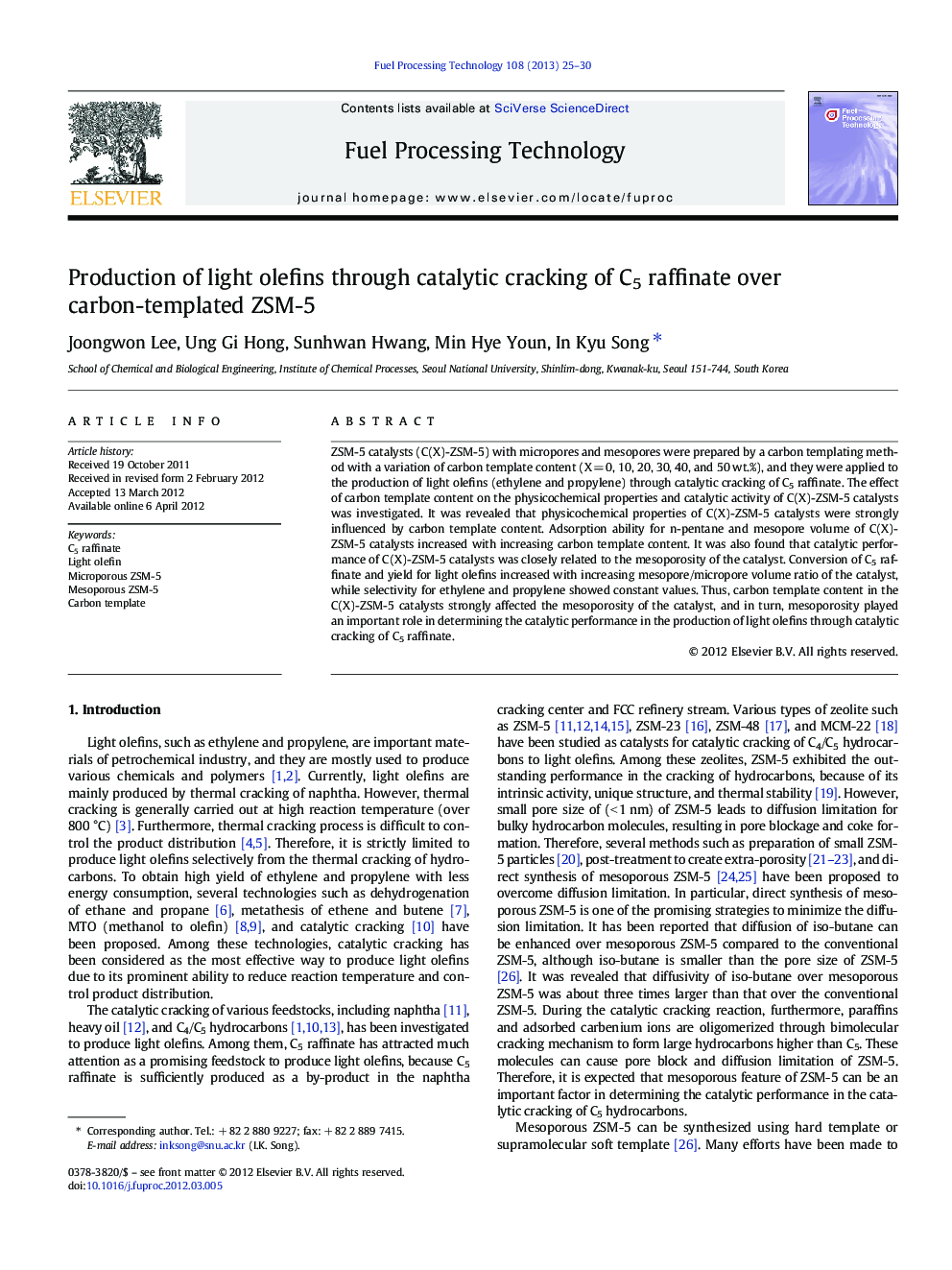| کد مقاله | کد نشریه | سال انتشار | مقاله انگلیسی | نسخه تمام متن |
|---|---|---|---|---|
| 210133 | 461698 | 2013 | 6 صفحه PDF | دانلود رایگان |

ZSM-5 catalysts (C(X)-ZSM-5) with micropores and mesopores were prepared by a carbon templating method with a variation of carbon template content (X = 0, 10, 20, 30, 40, and 50 wt.%), and they were applied to the production of light olefins (ethylene and propylene) through catalytic cracking of C5 raffinate. The effect of carbon template content on the physicochemical properties and catalytic activity of C(X)-ZSM-5 catalysts was investigated. It was revealed that physicochemical properties of C(X)-ZSM-5 catalysts were strongly influenced by carbon template content. Adsorption ability for n-pentane and mesopore volume of C(X)-ZSM-5 catalysts increased with increasing carbon template content. It was also found that catalytic performance of C(X)-ZSM-5 catalysts was closely related to the mesoporosity of the catalyst. Conversion of C5 raffinate and yield for light olefins increased with increasing mesopore/micropore volume ratio of the catalyst, while selectivity for ethylene and propylene showed constant values. Thus, carbon template content in the C(X)-ZSM-5 catalysts strongly affected the mesoporosity of the catalyst, and in turn, mesoporosity played an important role in determining the catalytic performance in the production of light olefins through catalytic cracking of C5 raffinate.
Figure optionsDownload as PowerPoint slideHighlights
► Carbon-templated ZSM-5 catalysts were prepared.
► Catalytic cracking of C5 raffinate to light olefins was conducted.
► Mesopore volume increased with increasing carbon template content.
► Catalytic performance increased with increasing mesoporosity.
Journal: Fuel Processing Technology - Volume 108, April 2013, Pages 25–30